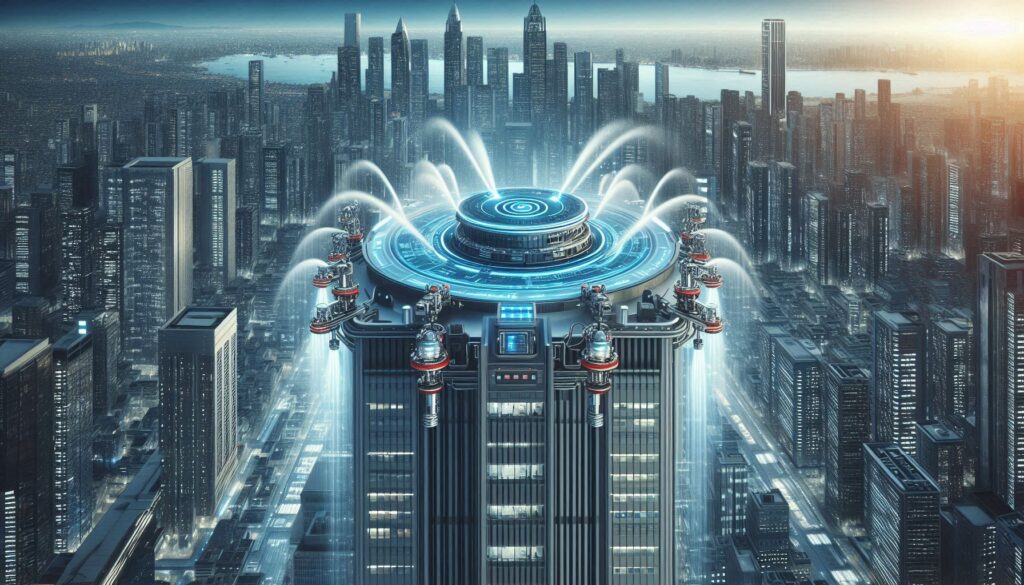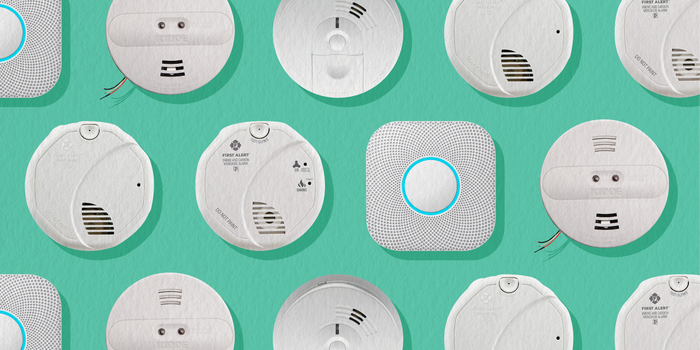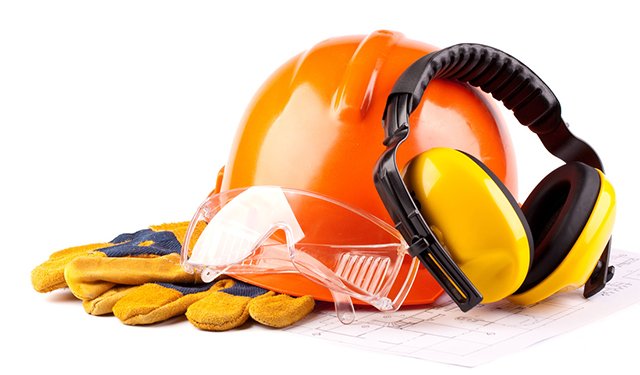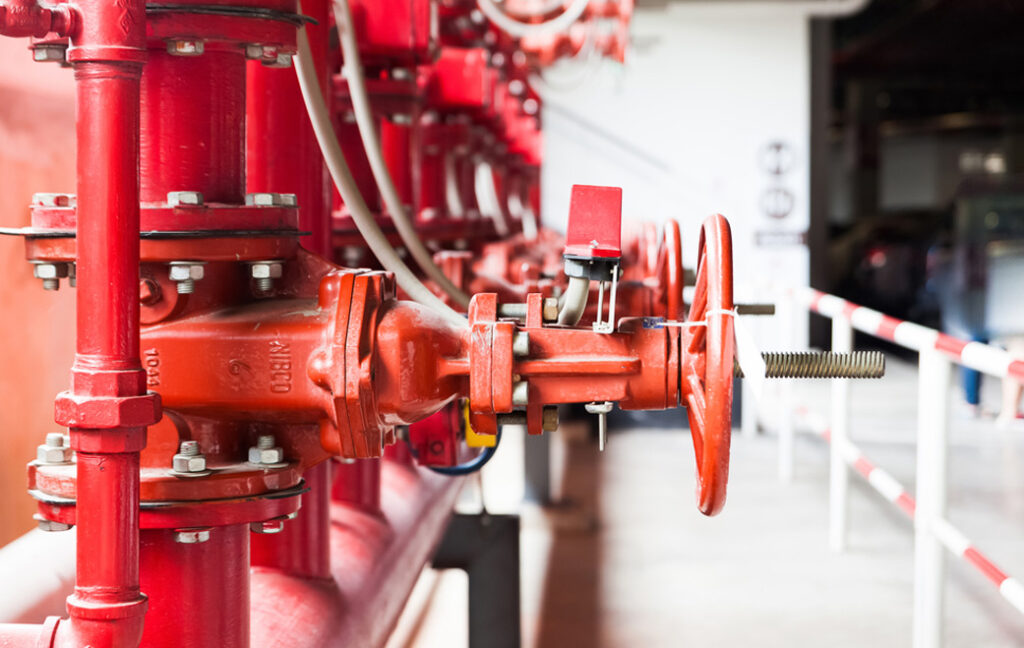Exploring the advancements in strategies and equipment tailored for combating fires in skyscrapers.
High-rise buildings are marvels of modern architecture and engineering, symbolizing the progress of urbanization and technological advancements. These towering structures, often home to thousands of residents, businesses, and critical infrastructure, present unique challenges when it comes to fire safety and suppression. Fires in high-rise buildings are particularly dangerous due to their vertical design, limited evacuation routes, and potential for rapid smoke and fire spread. As cities grow and buildings reach unprecedented heights, the evolution of fire suppression techniques tailored to these towering structures has become an essential aspect of urban safety.
The history of fire suppression in high-rise buildings is a story of innovation, lessons learned from catastrophic fires, and the relentless pursuit of safer environments. This blog post explores the advancements in strategies, equipment, and technologies that have revolutionized fire suppression in skyscrapers, ensuring that these architectural giants are as safe as they are impressive.
The Unique Challenges of High-Rise Fires
Before delving into the evolution of fire suppression techniques, it’s essential to understand the inherent challenges posed by high-rise buildings during a fire emergency. These challenges have driven the development of specialized strategies and technologies over the decades.
1. Height and Accessibility
High-rise buildings, by definition, are too tall for traditional firefighting equipment, such as ground-based ladders and water hoses, to reach upper floors. This makes the suppression of fires on higher levels significantly more complex and resource-intensive.
2. Evacuation Difficulties
Evacuating occupants from a high-rise building during a fire is far more challenging than in smaller structures. Elevators are generally unsafe to use during a fire, leaving stairwells as the primary escape route. Narrow or crowded stairwells can create bottlenecks, delaying evacuation and increasing the risk to lives.
3. Smoke Spread
Smoke rises quickly in high-rise buildings, often spreading through elevator shafts, stairwells, and ventilation systems. This can make upper floors uninhabitable within minutes, even if the fire itself is contained to lower levels.
4. Water Pressure and Supply
Delivering water to upper floors of a high-rise building requires specialized pumping systems to overcome gravity and maintain adequate pressure. Without proper infrastructure, firefighters may struggle to supply water where it’s needed most.
5. Structural Complexity
Modern skyscrapers are built with intricate designs, featuring large glass facades, open floor plans, and a mix of materials. While aesthetically appealing, these features can complicate fire suppression efforts by influencing how fire and smoke spread.
Early Fire Suppression Techniques in High-Rises
The early days of high-rise construction (late 19th and early 20th centuries) saw minimal consideration for fire suppression. Fires in tall buildings were often catastrophic due to a lack of adequate safety measures. However, as cities grew and the number of skyscrapers increased, the need for tailored fire suppression strategies became evident.
Manual Firefighting
In the earliest high-rise buildings, fire suppression relied heavily on manual firefighting efforts. Firefighters used hand-carried fire extinguishers, buckets of water, and basic tools to combat blazes. While effective for small fires, these methods were inadequate for larger fires, especially on upper floors.
Firefighter Equipment
As buildings grew taller, fire departments began using longer ladders and hoses. However, these tools were often limited to the first six to eight stories, leaving higher floors vulnerable. Firefighters also faced significant risks due to a lack of personal protective equipment (PPE), such as modern fire-resistant suits and breathing apparatuses.
Sprinkler Systems: The First Revolution
The introduction of automatic sprinkler systems in the late 19th century marked a turning point in fire suppression for high-rise buildings. Early sprinkler systems were rudimentary but effective, releasing water when a fire’s heat caused a glass bulb or fusible link to break. While not yet widespread, these systems paved the way for more advanced fire suppression technologies in the decades to come.
Modern Fire Suppression Techniques
Today, fire suppression in high-rise buildings has evolved into a sophisticated science, combining advanced engineering, cutting-edge technology, and strategic planning. Below are some of the key advancements that have transformed fire safety in skyscrapers.
1. Advanced Sprinkler Systems
Modern sprinkler systems are far more sophisticated than their early predecessors. They are designed to detect fires quickly and suppress them at their source, preventing the flames from spreading.
- Zoned Systems: High-rise buildings are often divided into zones, with distinct sprinkler systems for each zone. This ensures that water is delivered precisely where it’s needed, minimizing damage to unaffected areas.
- Pre-Action Systems: These systems require two triggers (such as heat and smoke detection) before releasing water, reducing the risk of accidental activation.
- High-Pressure Sprinklers: To combat the challenges of delivering water to upper floors, high-pressure sprinkler systems have been developed. These systems use powerful pumps to maintain water pressure and ensure effective fire suppression at any height.
2. Smoke Control Systems
In high-rise fires, smoke is often more deadly than fire itself. Modern buildings are equipped with sophisticated smoke control systems that help contain and remove smoke.
- Pressurized Stairwells: Stairwells are kept under positive pressure to prevent smoke from entering, ensuring safe evacuation routes.
- Smoke Exhaust Systems: Large fans and vents are used to extract smoke from affected areas, improving visibility and reducing the risk of asphyxiation.
- Compartmentalization: High-rise buildings are designed with fire-resistant walls and doors that compartmentalize floors, limiting the spread of smoke and fire.
3. Firefighter Access and Communication
Ensuring that firefighters can reach and communicate effectively within a high-rise building is critical to successful suppression efforts.
- Dedicated Firefighter Elevators: Many modern high-rises are equipped with elevators designed exclusively for use by firefighters during emergencies. These elevators are fireproof and operate independently of the main elevator system.
- Internal Standpipe Systems: Standpipes are vertical water pipes installed throughout high-rise buildings, allowing firefighters to connect hoses on each floor rather than carrying them up stairwells.
- Two-Way Communication Systems: High-rise buildings are equipped with emergency communication systems that allow firefighters to coordinate operations and communicate with building occupants.
4. Intelligent Fire Detection Systems
Early detection is key to preventing fires from escalating. High-rise buildings now use intelligent fire detection systems that go beyond traditional smoke alarms.
- Multi-Sensor Detectors: These devices detect heat, smoke, and carbon monoxide, providing faster and more accurate fire detection.
- Centralized Monitoring: Fire detection systems are connected to a central control room, where building operators and firefighters can monitor the fire’s location and spread in real time.
- AI and Predictive Analytics: Some buildings use artificial intelligence to analyze fire risk factors and predict potential fire behavior, enabling proactive safety measures.
5. Robotics and Drones
The use of robotics and drones in fire suppression is an emerging trend with significant potential for high-rise buildings.
- Firefighting Robots: Robots equipped with water cannons and heat-resistant cameras can enter hazardous areas that are too dangerous for human firefighters.
- Drones: Drones can quickly survey a building’s exterior, providing valuable information about fire location and structural damage.
6. Fire-Resistant Materials
Advancements in construction materials have also contributed to improved fire safety in high-rise buildings.
- Fire-Resistant Glass: Modern skyscrapers often use glass that can withstand high temperatures, preventing the fire from spreading through windows.
- Non-Combustible Cladding: Fire-resistant cladding materials reduce the risk of external fire spread, a critical factor in high-rise safety.
Lessons Learned from Tragedies
Many of the advancements in fire suppression have been driven by lessons learned from devastating high-rise fires. Tragedies like the Grenfell Tower fire in London (2017) and the MGM Grand fire in Las Vegas (1980) highlighted critical gaps in fire safety and prompted stricter regulations, improved building codes, and the adoption of new technologies.
The Future of High-Rise Fire Suppression
As skyscrapers continue to grow taller and more complex, the future of fire suppression will likely involve even greater integration of technology and innovation. Trends to watch include:
- Smart Buildings: High-rise buildings equipped with IoT (Internet of Things) sensors and interconnected systems that automatically detect, suppress, and report fires.
- Autonomous Firefighting Systems: AI-powered systems capable of independently identifying and extinguishing fires without human intervention.
- Green Fire Suppression: Environmentally friendly fire suppression agents that minimize harm to the environment while effectively combating fires.
Conclusion
The evolution of fire suppression techniques in high-rise buildings is a testament to human ingenuity and the relentless pursuit of safety. From early manual firefighting efforts to advanced sprinkler systems, smoke control technologies, and intelligent detection systems, each innovation has played a critical role in reducing the risk of catastrophic fires in skyscrapers.
As we continue to push the boundaries of architecture and engineering, ensuring the safety of high-rise buildings will remain a top priority. By learning from the past, embracing new technologies, and prioritizing proactive fire safety measures, we can create a future where even the tallest structures are equipped to withstand the threat of fire.





